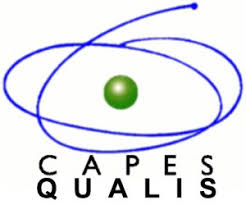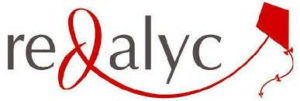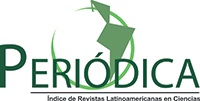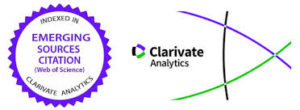0718-8706
Article Preparation Avances en Ciencias e Ingeniería (ACI)
PAPER PREPARATION
Every article must include the required sections of a peer-reviewed and indexed international publication. This implies that it must contain: Introduction (information justifying the work and duly documented and referenced, including the objectives), Materials and Methods (Methodology, Mathematical Development, Modeling, etc., describing the procedure, reagents, quantities, equipment, models used, etc.), Results, Discussion (or Results and Discussion, where the results obtained are analyzed and discussed, supported by figures, schemes, diagrams, tables of results, comparison with results obtained by other authors and their respective references, proposals, validations, etc., verifying compliance with the objectives), Conclusions (main ideas of the study as a corollary, developed in short and concrete paragraphs) and References (listing the literature cited in the paper; these references must be updated to the present). The article must be prepared according to the following general structure:
First Page
- The first page is intended to include the title, abstract, and keywords (in Spanish and English), the authors, and their institutional address (institution, faculty, street, city, country, etc.). The maximum number of authors on the work should not exceed 6.
- The title of the article (either in Spanish or English) must have a maximum of 2 or 3 lines, considering that the font type and size for it is Trebuchet MS 14.
- The abstract should be between 130 and 150 words long. The abstract should include the objective, methodology used, a description of relevant results, and conclusions. The content should reflect the written text, whether in Spanish or English.
- The keywords should be consistent with the article's content. Avoid using phrases and/or abbreviations as keywords. Also, avoid using keywords that are in the title of the article. The number of keywords should be 4.
Second Page onwards
- Las secciones del trabajo tales como la Introducción, Metodología, Resultados, Referencias, etc., deben ser incluidas desde la segunda página en adelante. Las secciones y subsecciones no deben ir numeradas.
- The general text format is single-spaced. Letter-sized paper should be used, with 3 cm top and bottom margins and 2 cm left and right margins. The font used is Trebuchet MS, size 10, and the text should be justified. The text should be written in an impersonal style (third person). A space should be left between each paragraph and between titles, subtitles, and paragraphs. Excessive subtitles should be avoided. Titles should be capitalized and bold, and subtitles should be lowercase, without bold or italics.
- Figures must have a good resolution (and if inserted, they must be in jpg format, ensuring the file size is not excessive). They can be created in black and white or (if necessary). In addition, graphics should be simple, without overloading them with information (on the axes and within the figure). The axes should be clearly defined (indicating their meaning and respective scale). Tables in general should be simple, with single lines, avoiding the use of colors. If you want to highlight a value, variable, or equation within the table, it should be in bold (not italics). You can use Trebuchet MS font, size 9, within the table.
- Figures and Tables should be placed (as far as possible) at the ends of the page and should preferably appear on the page where they are cited in the text..
- The format to be used in the legends of figures and tables is the following:
Fig. 1: Comparative chart of the size of ... (legend goes below the figure and centered, with Trebuchet MS font size 9)
Table 1: Statistical results when applying … (legend goes above the table and centered, with Trebuchet MS font size 9)
- Both figure and table legends should not exceed two lines. A space should be left between the figure and/or table and the legend, and between the legend and paragraphs. To cite figures and tables in the text, use the following format: "Figure 1 or Table 1 shows..." or "The results show (Figure 1 or Table 1) that the curves follow..." (as applicable).
- Footnotes are not allowed anywhere in the manuscript.
- Equations, if included in the body of the article, should be placed with space above and below the text. The equation should be placed on the left side of the page, and its respective numbering (in parentheses) on the right.
- To refer to an equation in the text, the following format must be used: according to equation 1 (or eq. 1), or it is shown that the speed of ... is proportional to ... (see equation 1 or see eq. 1).
- The nomenclature, if it is to be included, should be placed after the Conclusions and before the References.
- Acknowledgments, if the authors wish to include them, should be written simply, as fair and necessary, and in no more than 3 lines (if possible), and should appear before the References.
References and their citation in the text
An important part of the publication is the support provided by the relevant literature, which supports and validates the presented research work. Therefore, the manuscript must include this section (referred to as References), which will be located at the end of the work, after the Conclusions and Acknowledgments (if included). The respective bibliographical references must be included in the body of the article where appropriate (as applicable). Emphasis should be placed on references from articles published in top-tier journals.
In this section, references should be numbered and ordered alphabetically according to the last name of the first author (the format for authors in references is: author's last name and initials of their first name(s), separated by a space. References included in the article should follow the following format (based on APA standards), depending on their source:
- Texts without specific pages: Skoog, D.A. & West, D.M. (1989). Analytical Chemistry. 4th ed. Madrid: McGraw-Hill.
- Texts referring to a chapter or pages of a book (as applicable): Skoog, D.A. & West, D.M. (1989). Analytical Chemistry, Chapter 4, pp. 353–385. 4th ed. Madrid: McGraw-Hill.
- Book chapter written by one author, which is part of a larger work by one or more authors: Rizvi, S.S.H. (1986). Thermodynamic properties of foods in dehydration. In M.A. Rao & S.S.H. Rizvi (eds.). Engineering Properties of Foods (pp. 133–214): Marcel Dekker, New York.
- Unpublished theses (doctoral or master's degree): Wiman, J. (1997); Hydrodynamics, erosion and heat transfer in pressurized Fuidized beds. Ph.D. Thesis, Department of Thermo and Fluid Dynamics, Chalmers University of Technology, Sweden.
- Printed Scientific Journal Articles. With one author: Morse, M.D. (1986). Cluster of transition-metal atoms. Chem. Rev., 86, 1049–1109.
- Printed scientific journal articles. With two authors: Ahmed, I.A. & Robinson, R.K. (1999). The ability of date extracts to support the production of aflatoxins. Food Chemistry, 66(3), 307–312.
- Articles from printed scientific journals. With three to six authors: Bosnick, K.A., Haslett, T.L., Fedrigo, S., Moskovits, M., Chan, W-T. & Fournier, R. (1999). Triccaped tetrahedral Ag: A structural determination by resonance Raman spectroscopy and density functional theory. J. Chem. Phys., 111(19), 8867-8870.
- Bosnick, K.A., Haslett, T.L., Fedrigo, S., Moskovits, M., Chan, W-T. & Fournier, R. (1999). Triccaped tetrahedral Ag: A structural determination by resonance Raman spectroscopy and density functional theory. Chem. Phys., 111(19), 8867-8870.
- Printed scientific journal articles. With more than six authors: Du, G., Zhuang, X., Querol, X., Izquierdo, M., Alastuey, A., Moreno, T. et al. (2009). Ge distribution in the Wulantuga high-germanium coal deposit in the Shengli coalfield, Inner Mongolia, northeastern China. International Journal of Coal Geology, 78(1), 16-26.
- Scientific journal article in press: Coloma, F., Sepúlveda, A., Romero, J.N. & Rodríguez, F. (in press). Journal XXXX. Gas phase hydrogenation of crotonaldehyde over platinum supported by oxidized carbon black.
- Printed journal article obtained from an electronic version: Streets, D.G., Zhang, Q. & Wu, Y. (2009). Projections of global mercury emissions in 2050 [electronic version]. Environmental Science and Technology, 43(8), 2983–2988. DOI XXXXX
- Non-print electronic journal articles: Fredickson, B.L. (2007, March 7). Cultivating positive emotions to optimize health and well-being. Prevention & Treatment, 3, article 0001a. Retrieved November 20, 2009, from https://journal.apa.org/prevention/volume3/pre0030001a.html or the respective DOI.
- Documents available on the website of a university program or department: Muller, C. (1984). Turfgrass Management. Retrieved August 15, 2011, from the Faculty of Agricultural, Veterinary and Forestry Sciences, Department of Agricultural Production, University of Chile, Santiago, Chile. Website: https://catalogo.udechile.cl/web2/tramp2.exe/see_record/A02dsnck.004?server=1 or the respective DOI.
- Contribution to a congress, conference, workshop: Meadowcroft, D.B., Montrone, E.D., Oakey, J.E. & Stott, J. (1991); Experience of combating tube bank wastage in the Grimethorpe PFBC. Proceedings of the Institute of Energy’s Fifth International Fluidized Combustion (pp. 105–114), London.
- Unpublished papers: Rojas, C. (2005, November). Study of the impact of grades in science majors on university dropout rates. Paper presented at the Faculty of Science and Engineering, International Business University, Chile.
In the text, references (of authors of books, publications, theses, etc.) must be cited with the surname(s) of the author(s) according to the following format:
- For references with a single author, use; (Alonso, 2007) or as cited by Alonso (2007).
- For references with two authors, use; (Trigo & Valdés, 2008) or as indicated by Trigo and Valdés (2008)
- For references with more than two authors (three or more), use; (Garrido et al., 2008) or as shown by Garrido et al. (2008)
Only those references cited in the article should be listed (and vice versa). References to unpublished material should not be included in the list. The accuracy and relevance of the references is the author's responsibility. All references included and cited in the text should be easily accessible to the reader; otherwise, it is best not to include them. It is also recommended to avoid self-citations (unless strictly necessary). You can download the article preparation guidelines and a sample article (format) at the following links:
Preparación de Artículos-ACI artículo formato-ejemplo ACI
Information to Authors
Due to database requirements, all authors involved must provide a brief resume and the ORCID code when submitting articles.
Submission of articles
Manuscripts that comply with the article preparation guidelines must be uploaded by selecting the "submit article" option or sent (in DOC and PDF formats), together with the rest of the required documents and information (cover letter and ethical commitment, reviewers' suggestions, and payment), to the Editor of Avances en Ciencias e Ingeniería at editor@acijournal.cl. Once the articles and documents are received, an acknowledgment will be made.
Articles that meet the required requirements (including proof of payment) will be processed, and the authors will be notified by sending an official note of receipt and submission of their manuscript.














